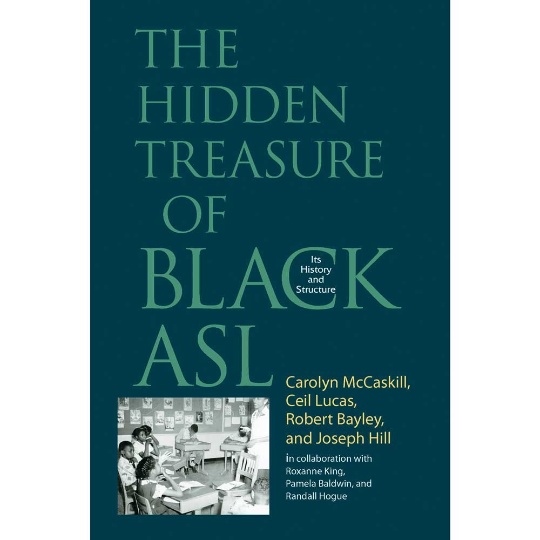The Hidden Treasure of Black ASL
People often ask if deaf people around the world sign the same language. They are frequently surprised to learn that there are different sign languages, as well as variations of these languages t...


The Hidden Treasure of Black ASL
People often ask if deaf people around the world sign the same language. They are frequently surprised to learn that there are different sign languages, as well as variations of these languages t...
SKU #B1197 DISCONTINUED
$75.00
- Overview
- Additional Details
- Accessories
- Q&A
- Customer Reviews
- Manual
The contributors to The Hidden Treasure of Black ASL considered three questions in their study.
- What was the sociohistorical reality that made a separate variety of ASL possible?
- What are the features of the variety of ASL that people call Black ASL?
- Can the same kind of unique features that have been identified in African American English be identified in Black ASL?
This groundbreaking book go far in answering these questions while also showing the true treasures of Black ASL. [Carolyn McCaskill, Ceil Lucas, Robert Bayley, Joseph Hill; (2011) 240 pages; hard cover]
| Feature | Details | |
|---|---|---|
| Mfg part # | 9781563684890 | |
| UPC | 9781563684890 | |
| Weight (lbs) | 1.15 | |
| Country of Manufacture | United States | |
| Author(s) | Carolyn McCaskill, Ceil Lucas, Robert Bayley, Joseph Hill | |
| Deaf Author | No | |
| Publisher | Gallaudet University Press | |
| Publication Date | 2011 | |
| Media Type(s) Book CD-ROM DVD | Yes No No | |
| Cover Type | Hard Cover | |
| Pages | 240 | |
| Voice Over / Audio | No | |
| Captions | No | |
| Age(s) Baby Child Teen Adult | No No No Yes | |
| Earn CEUs | No | |
| ISBN | 9781563684890 |
Customer Q&A
Get help from Diglo and other customers who purchased this. Ask a new question.
Ask a New Question
To pose a question, please log into your Diglo account or create a new account.
Customer Reviews
Real people with real opinions. Post your own review.
5 out of 5 stars
BEST BOOK
Review by Brenda on Sep 23, 2020 - Verified Customer
Post Your Own Review
To leave a review, please log into your Diglo account or create a new account.
Manual:
Back to top

